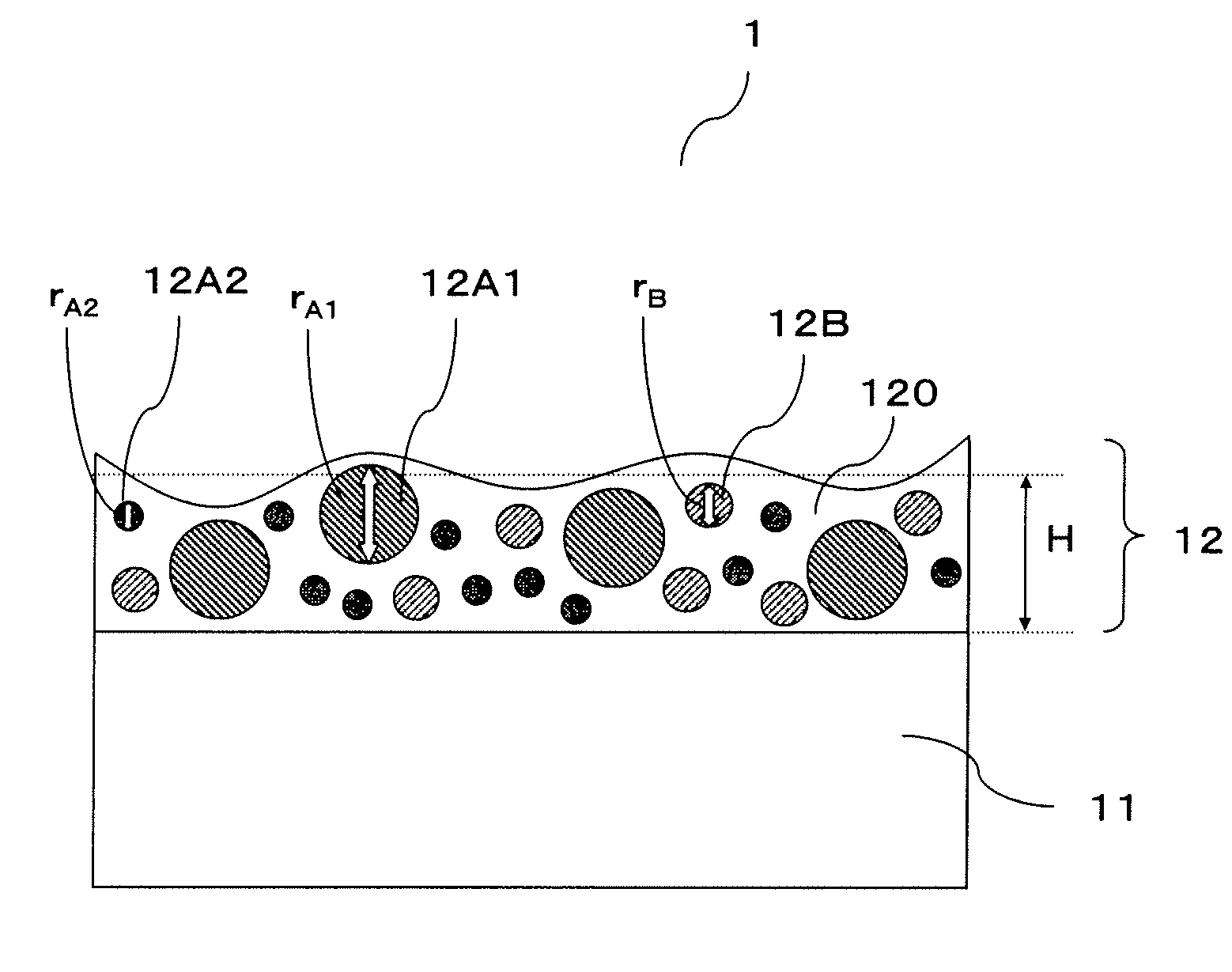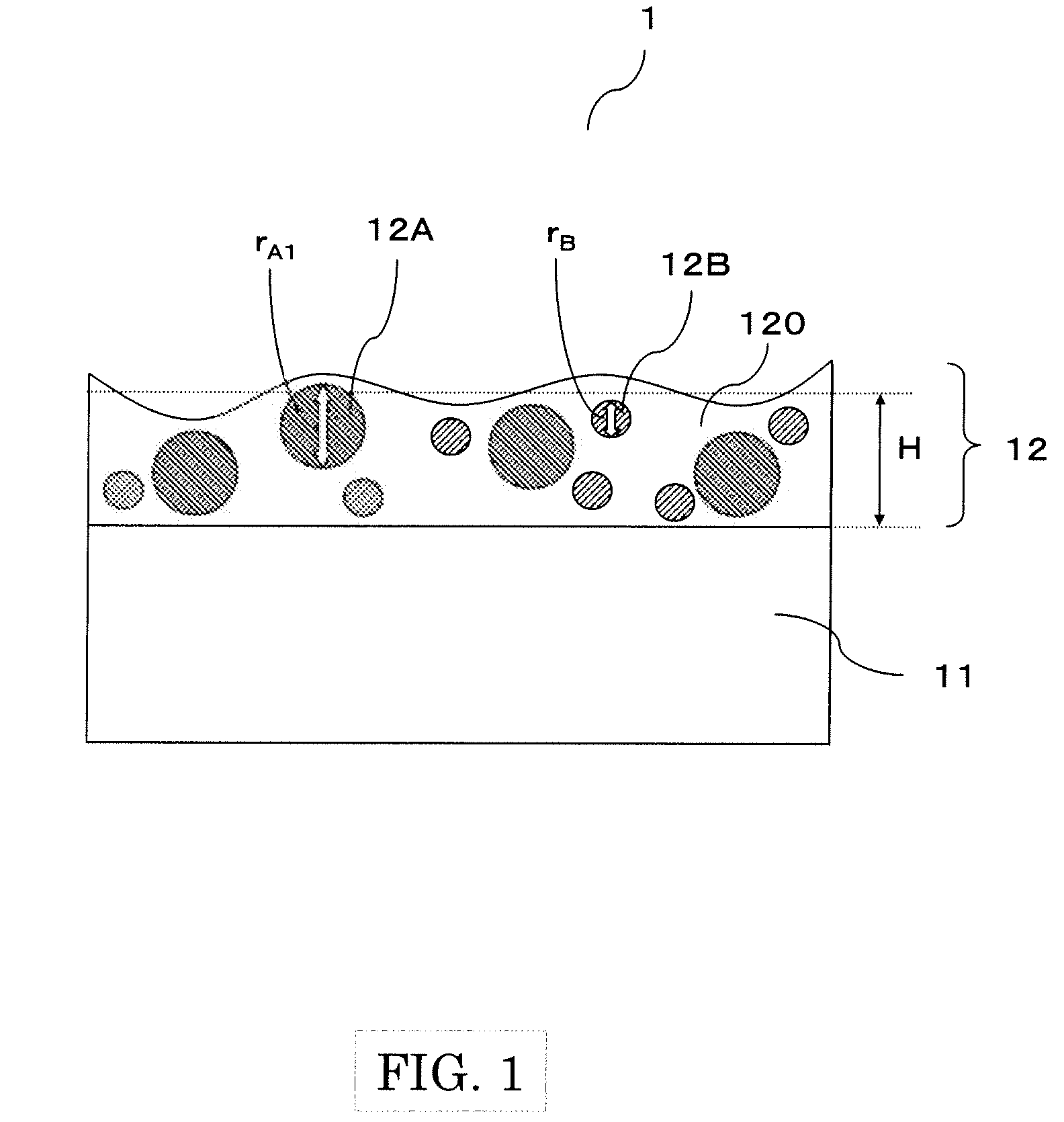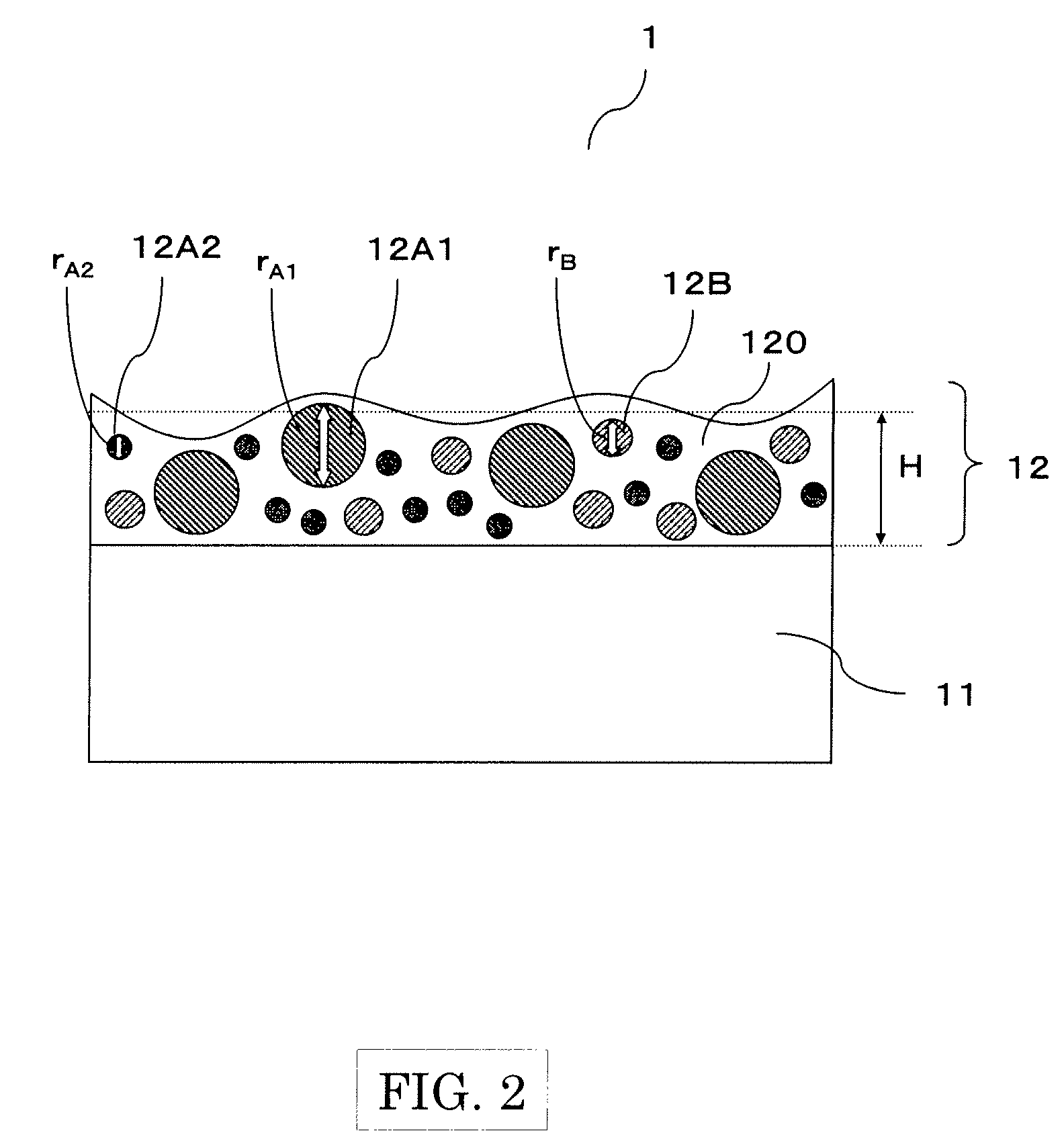Antiglare Film
a film and anti-glare technology, applied in the field of anti-glare film, can solve the problems of large number of defects, spaced by a roll pitch, and film appearan
- Summary
- Abstract
- Description
- Claims
- Application Information
AI Technical Summary
Benefits of technology
Problems solved by technology
Method used
Image
Examples
example 1-18
, Comparative Example 1-6
[0096]A triacetyl cellulose film (TD-80U, manufactured by Fuji Photo Film Co., Ltd.) was used as a transparent substrate. The coating liquid for forming an antiglare layer which consisted of a binder matrix forming material, particles A, particles B, and a solvent shown in Table 1 and Table 2 was used as a coating liquid. Although each of materials, refractive indexes, average diameters, and parts by weight of the particles A and the particles B varied, the binder matrix forming material and the solvent were common to all of the Examples 1-18 and Comparative Examples 1-6.
TABLE 1BinderIonizing radiationPentaerythritol triacrylate94.5 pbwRefractivematrixcurable material(by KYOEISHA CHEMICAL)(parts byIndexformingweight)nM:materialPhotopolymerizationIrgacure184 5.0 pbw1.525initiator(by Ciba Specialty Chemicals)AcrylicBYK-350 0.5 pbwadditive(by BYK-Chemie Japan)SolventDioxolan30.0 pbwToluene70.0 pbw
TABLE 2Particles AParticles BRefractiveAveragePart byRefractiveAv...
example 19-36
, Comparative Example 7-12
[0100]A triacetyl cellulose film (TD-80U, manufactured by Fuji Photo Film Co., Ltd.) was used as a transparent substrate. The coating liquid for forming an antiglare layer which consisted of a binder matrix forming material, particles A1, particles A2, particles B, and a solvent shown in Table 4 and Table 5A and B was used as a coating liquid. Although each of materials, refractive indexes, average diameters, and parts by weight of the particles A and the particles B varied, the binder matrix forming material and the solvent were common to all of the Examples 19-36 and Comparative Examples 7-12. The particles A1 and A2 were determined in a way that the particle A1 had the larger average diameter.
TABLE 4BinderIonizing radiationPentaerythritol triacrylate94.5 pbwRefractivematrixcurable material(by KYOEISHA CHEMICAL)(parts byIndexformingweight)nM:materialPhotopolymerizationIrgacure184 5.0 pbw1.525initiator(by Ciba Specialty Chemicals)AcrylicBYK-350 0.5 pbwaddi...
PUM
| Property | Measurement | Unit |
|---|---|---|
| refractive index | aaaaa | aaaaa |
| viewing angle | aaaaa | aaaaa |
| size | aaaaa | aaaaa |
Abstract
Description
Claims
Application Information
 Login to View More
Login to View More - R&D
- Intellectual Property
- Life Sciences
- Materials
- Tech Scout
- Unparalleled Data Quality
- Higher Quality Content
- 60% Fewer Hallucinations
Browse by: Latest US Patents, China's latest patents, Technical Efficacy Thesaurus, Application Domain, Technology Topic, Popular Technical Reports.
© 2025 PatSnap. All rights reserved.Legal|Privacy policy|Modern Slavery Act Transparency Statement|Sitemap|About US| Contact US: help@patsnap.com



